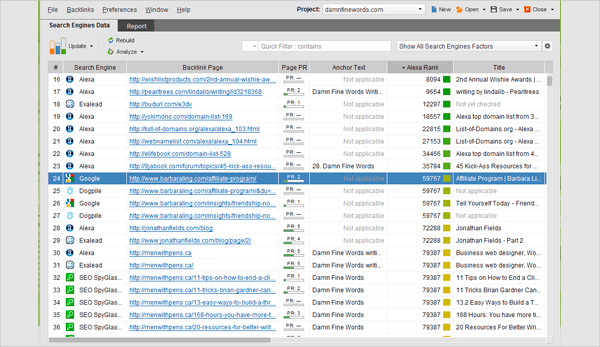
If you want the answers to these questions, you need a rank tracking feature to go with your SEO tool. How are your keywords doing in the SERPs? Are you ranking higher than the competition? Now you can review everything wrong with a specific post or article. You can even see problems on a page level. This is so you can see what’s causing your domain to get high or low marks. There is an option to see a breakdown of the report. SEMrush looks at your site and gives it a score. Not to be outdone, SEMrush can also perform the same tasks. SEO Powersuite’s Website Auditor does a great job of letting you know if you have indexing and crawlability issues, page redirects, faulty URLs, missing tags, duplicate content, and similar issues. So we’re happy to report that both SEMrush and SEO Powersuite are capable of assessing your site and finding probable chokepoints. On-page optimization is one of the foundations of search engine optimization. SEMrush prepares a list of backlink opportunities so you can set an outreach campaign Link Assistant finds site owners you could work with and tracks your outreach progress SEMrush has features to help you conduct backlink audits and analytics Spyglass Tool shows you which sites link back to your domain Position Tracking monitors your performance in the SERPs and tells you if you moved higher or lower Rank Tracker keeps you up-to-date with how your keywords perform on search engines SEMrush performs a technical SEO audit of your site to find on=page issues

Website Editor looks at your site and looks for SEO opportunities With that said, here are some features you can expect to have when you purchase either of these SEO tools. And honestly, if the features listed in this section are all you need, you can’t go wrong with either one. SEMrush and SEO Powersuite share some similarities as far as functionality is concerned. SEO PowerSuite vs SEMrush: How Are They Similar?


 0 kommentar(er)
0 kommentar(er)
